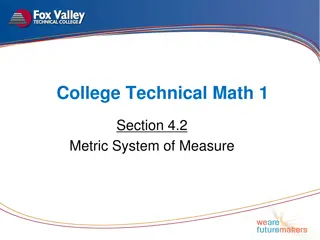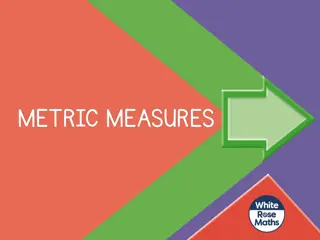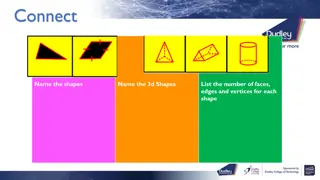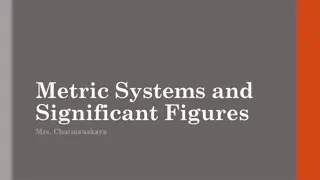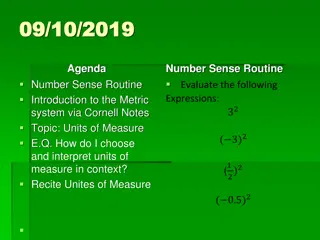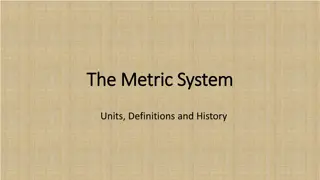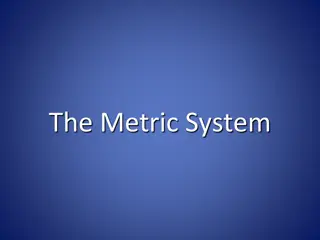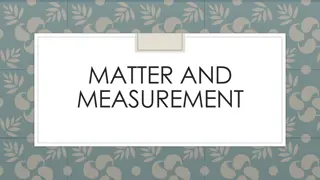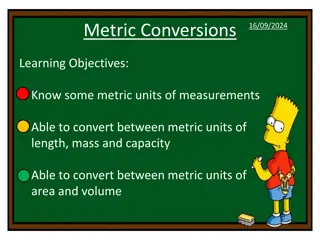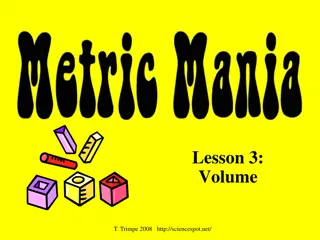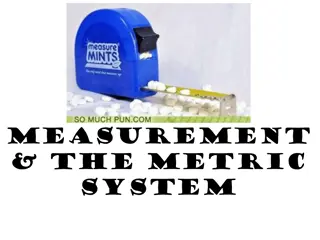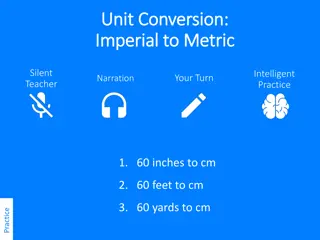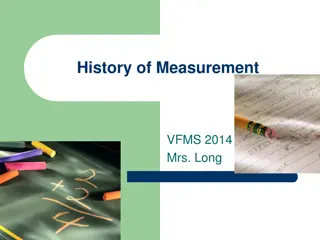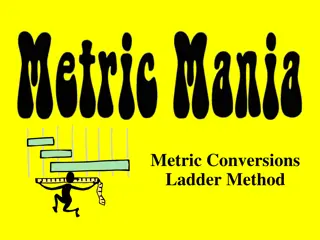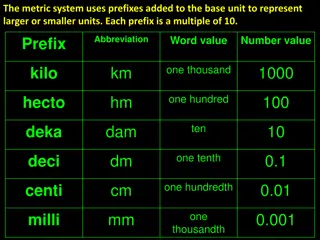Understanding Metric Units of Capacity
Explore the metric units of capacity including milliliters and liters. Learn to measure small objects with milliliters and larger objects with liters. Discover the relationship between milliliters and liters, and different objects measured in each unit.
Uploaded on Oct 02, 2024 | 0 Views
Download Presentation

Please find below an Image/Link to download the presentation.
The content on the website is provided AS IS for your information and personal use only. It may not be sold, licensed, or shared on other websites without obtaining consent from the author. Download presentation by click this link. If you encounter any issues during the download, it is possible that the publisher has removed the file from their server.
E N D
Presentation Transcript
Metric Units of Capacity LESSON 15-2 CCSS 3.MD.2
Warm Up Find the perimeter and area of Shape A and Shape B. Which shape has the greater perimeter? The greater area? Why? 7 cm 3 cm 4 cm
Think and Write Which measurement is larger, 4 quarts or 8 cups? Explain.
Metric Units of Capacity The Metric Units of Capacity are used to measure how much an object holds in most areas of the world. There are 2 main units of capacity, the milliliter (mL) and liter (L).
Milliliters Milliliters are used to measure the capacity of small objects. We would use milliliters to measure the capacity of a spoon, a small glass, or a small teacup. Which customary unit is similar to milliliters?
Liters Liters are used to measure the capacity of larger objects. One water bottle is similar to one liter. 1 Liter = 1,000 mL What objects might we measure in liters instead of milliliters?
Liter or Milliliter? 5 L or 5 mL?
Liter or Milliliter? 30 mL or 30 L?
Liter or Milliliter? 300 mL or 300 L?
Liter or Milliliter? 10 mL or 10 L?



